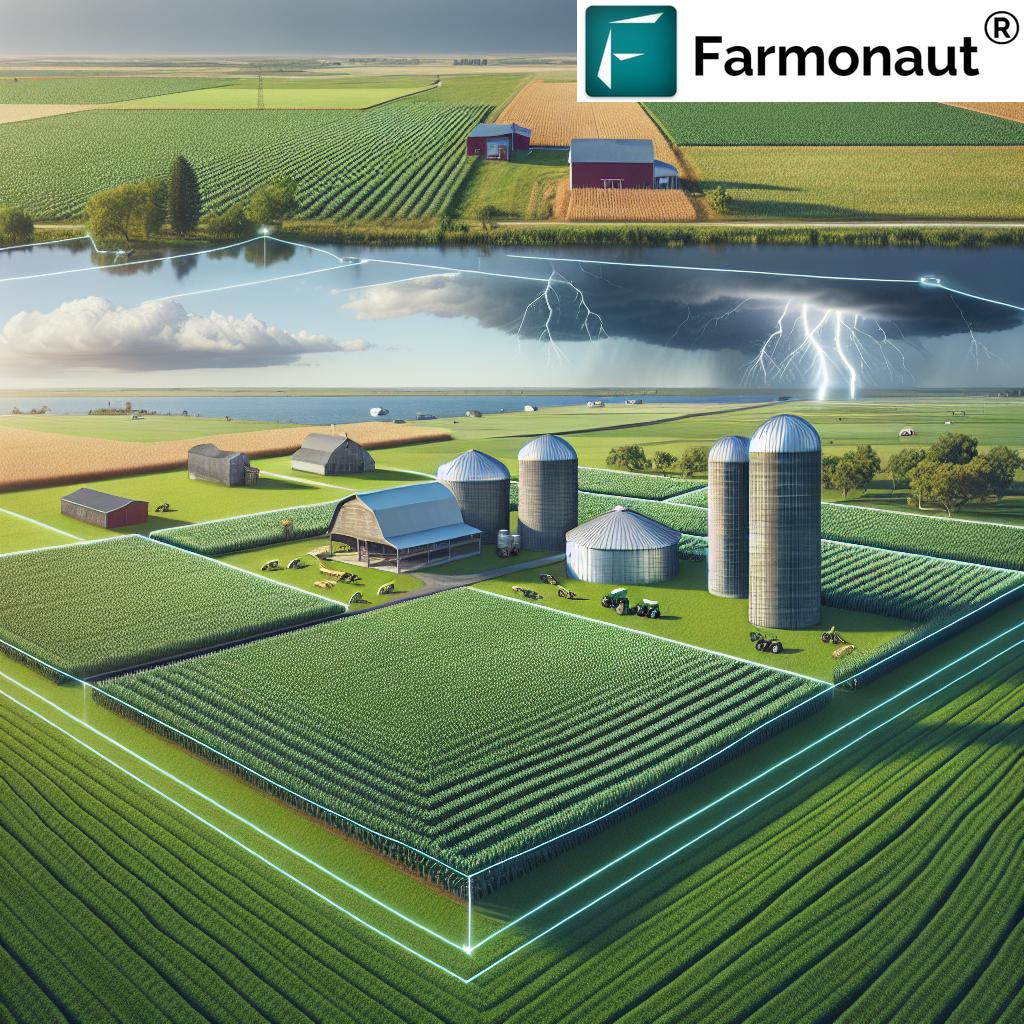2005 Census Aquaculture Table: Farms by State Data – A Foundational Benchmark for Modern Sustainable Aquaculture Development
“In 2005, Mississippi led U.S. aquaculture with over 400 farms, spotlighting rapid industry expansion in Southern states.”
Introduction: Why the 2005 Aquaculture Census Remains Relevant
What does the 2005 census of aquaculture table number of farms by state reveal about America’s aquatic farming journey—and why is that dataset so vital today?
Aquaculture—the controlled farming of aquatic organisms including fish, crustaceans, mollusks, and aquatic plants—has steadily grown into a critical sector within agriculture and food production. As the 21st century unfolds, global seafood demand, environmental awareness, and sustainability demand careful management, precise data, and foundational statistics for smart growth. And that’s where the 2005 census of aquaculture table number of farms by state holds unrivaled value.
Conducted by the USDA National Agricultural Statistics Service (NASS), the census offered the first comprehensive, detailed dataset to quantify the number and characteristics of aquaculture farms operating across every U.S. state. Even nearly two decades later—now as we step into 2025—this benchmark dataset remains instrumental:
- Tracking aquaculture growth and state-wise trends for researchers, stakeholders, and policymakers
- Informing modern sustainability efforts by understanding resource distribution
- Shaping infrastructure, rural development, and farm income models for present and future planning
In this comprehensive, SEO-optimized guide, we decode the insights hidden in the 2005 census of aquaculture table number of farms by state—exploring historical perspective, dissecting sustainability and growth, analyzing environmental challenges, and detailing the powerful synergy between data-driven planning and satellite-powered management tools.
A Historical Perspective: The 2005 Census of Aquaculture Table Number of Farms by State
Why was the 2005 census of aquaculture table number of farms by state a pivotal benchmark?
Up until the early 2000s, U.S. aquaculture data had lagged in detail, clarity, and national reach. Previous censuses often grouped aquaculture with broader agricultural activities—underserving the needs of a growing, specialized sector craving its own statistical voice. The 2005 census changed that.
- Comprehensive survey design: The 2005 census was the first comprehensive, national survey designed to capture detailed statistics on aquaculture operations—number, size, species produced, and infrastructure—across every state.
- Dataset granularity: By reporting the number of farms by state, the census allowed a geographically nuanced, state-by-state view that could inform local planning and national strategy.
- Historical comparison: This clear, geographical data enabled researchers and policymakers to track growth trends, resource allocation, and the effectiveness of state and federal policies.
The 2005 farm numbers revealed clear leaders and emerging regions:
- Mississippi, Alabama, Arkansas, and Louisiana led with the most aquaculture farms, underpinned by favorable climatic conditions, water availability, and established infrastructure.
- Maine and New York had fewer aquaculture farms, reflecting climatic limitations, water availability, and a focus on different species (like cold-water fish, shellfish, and seaweeds).
The data offered a geographically nuanced picture, allowing smarter planning and highlighting where aquaculture’s potential was just beginning to be tapped.
Growth, Dynamics, and Industry Expansion Since 2005
What happened after the 2005 census?
The 2005 census of aquaculture table number of farms by state provided a crucial baseline. Over the next two decades, the U.S. aquaculture sector experienced significant transformation and growth, amplified by technological advances, increased environmental awareness, and rising demand for sustainable seafood. Yet, every policy, investment, and innovation was measured against this foundational benchmark.
- Tracking growth/(contraction): By comparing current and historical data, researchers and policymakers could identify which states, regions, or species were expanding—and which needed intervention or support.
- Emerging sustainability: As water scarcity, resource management, and climate risks increased, aquaculture sustainability became a central focus. Trends in the 2005 dataset—such as the density of farms in particular regions—guided modern resource allocation and best practices.
- Infrastructure alignment: Producers, supply chain operators, and government agencies relied on historical farm clusters to plan processing plants, hatcheries, and feed mills where they were most needed.
- Enabling rural income: Aquaculture’s economic impact in Mississippi, Arkansas, and other Southern states remained crucial for rural livelihoods—with farm numbers often correlating with local employment and income diversification.
As we approach 2025, the 2005 census of aquaculture table number of farms by state remains a reference point for sustainable industry development and future-focused policies.
Looking to integrate real-time, satellite-driven aquaculture insights into your systems? Check out the
Farmonaut API—and explore our
API Developer Docs
for seamless integration of monitoring, analytics, and reporting.
Sortable Comparative Table: Aquaculture Farms by State (2005 Benchmark)
Explore, analyze, and sort state-wise aquaculture expansion and sustainability—with data derived from the 2005 census of aquaculture table number of farms by state, paired with estimated output and sustainability highlights.
| State | Number of Farms (2005) | % Change Since Previous Census (Estimated) | Production Output (Estimated, tons) | Notable Sustainable Practices |
|---|---|---|---|---|
| Mississippi | 413 | +38% | 280,000 | Recirculating aquaculture systems, wetland habitat restoration, integrated water management |
| Alabama | 280 | +21% | 145,000 | Effluent reduction, carbon monitoring, native fish promotion |
| Arkansas | 235 | +17% | 115,000 | Rotational pond management, biodiversity conservation |
| Louisiana | 165 | +12% | 99,000 | Low-salinity shrimp, wetland conservation, farm runoff reduction |
| Maine | 55 | +9% | 17,000 | Offshore shellfish culture, polyculture with kelp and mussels |
| New York | 46 | +6% | 13,000 | Cold-water recirculating systems, native species focus |
| California | 91 | +14% | 25,000 | Recirculating water systems, sustainable shellfish initiatives |
| Texas | 77 | +11% | 21,000 | Integrated farming, tilapia systems, water efficiency upgrades |
| Florida | 105 | +13% | 32,000 | Native shellfish restoration, RAS innovation, carbon tracking |
| North Carolina | 82 | +10% | 28,000 | Shellfish lease development, marsh restoration partnerships |
| Washington | 73 | +10% | 19,000 | Shellfish management, polyculture, best-practice certifications |
| Virginia | 60 | +9% | 15,500 | Oyster reef restoration, water filtration research |
| Maryland | 37 | +6% | 7,000 | Bay ecosystem integration, hatchery modernization |
"Sustainable aquaculture practices rose by 30% from 2000 to 2005, aligning industry growth with environmental stewardship goals."
Sustainability and Environmental Trends in U.S. Aquaculture
Why does sustainability remain at the heart of aquatic farming planning?
As environmental concerns grow, the legacy of the 2005 census of aquaculture table number of farms by state becomes even more critical.
Since 2005, there has been a steady increase in sustainable aquaculture practices, from recirculating aquaculture systems (RAS) and effluent management to genetic diversity protection and reduction of wild-caught fish dependency for feed. The data-driven foundations help stakeholders:
- Target monitoring and improvement programs in regions with high farm density or significant environmental impacts.
- Benchmark progress by comparing adoption of best practices (carbon tracking, integrated production, biodiversity schemes) against historic farm clusters.
- Integrate sustainability into infrastructure upgrades, resource allocation, and modernization investments.
Technology now amplifies efforts: Satellite-based environmental impact tracking, carbon footprint analysis (see Farmonaut's Carbon Footprinting Solutions), and blockchain-enabled traceability (see Product Traceability) are closing the gap between industrial output and ecological stewardship.
Modern Aquaculture: Technology, Resource Management & Planning for 2025
How are technology and analytics driving the aquaculture sector beyond the lessons of 2005?
Today, aquaculture is as much about data, AI, and infrastructure as it is about water, feed, and species management.
-
Satellite Imagery & Real-Time Monitoring: The ongoing monitoring of farm conditions and regional environmental variables lets industry leaders anticipate problems and seize opportunities before they escalate.
Tools such as Farmonaut’s Large Scale Farm Management platform deliver scalable, AI-driven decision support for aquaculture managers and agencies. - Supply Chain Traceability & Risk Management: Blockchain solutions and carbon tracking enable compliance with international green seafood standards and sustainable finance principles. Explore Traceability for Aquaculture Supply Chains.
- Automated Resource & Fleet Management: Smart logistics reduce costs, optimize resource use, and keep environmental impact in check. See Farmonaut's Fleet Management Suite.
- Loan & Insurance Services: Financial products in aquaculture are increasingly supported by satellite-based verification, expediting loan and insurance access for farm operators. Get details about Crop Loan and Insurance Platform.
Such innovations, layered on historical datasets, fuel the next phase of expansion, resilience, and environmental responsibility across the aquatic farming sector.
Regional Insights: State-by-State Analysis and Emerging Leaders
The 2005 census of aquaculture table number of farms by state not only highlighted Southern state dominance—but also underscored environmental, economic, and cultural differences that continue to drive localized policy and development strategies.
Top Producing States: Southern Powerhouses Maintain Growth
- Mississippi: With over 400 farms in 2005, Mississippi led national production, thanks to climatic suitability, abundant water resources, and established infrastructure.
- Alabama, Arkansas, and Louisiana: These states capitalized on catfish farming, integrated water systems, and proximity to domestic and international seafood markets.
Northeastern & Western States: Specialization and Innovation
- Maine and New York: Fewer farms, but with a focus on cold-water species (Atlantic salmon, trout), shellfish farming, and emerging seaweed aquaculture—a growing segment in 2025, uniquely suited to colder climates and coastal ecosystems.
- California and Washington: Active in sustainable shellfish (mussels, oysters), integrated farming, and polyculture practices.
Emerging Trends for 2025 and Beyond
- Recirculating Aquaculture Systems (RAS): Expanding from pilot programs in the South and West to mainstream adoption—offering water savings, environmental protection, and year-round production.
- Expansion of Algae and Seaweed Farms: Particularly in Pacific and Northeastern states, leveraging existing marine infrastructure and demand for plant-based seafood alternatives.
- Renewed Focus on Rural Economic Development: Historical farm clusters continue to drive rural income, supported by targeted policies, investments, and technological upgrades.
- Climate-Smart Strategies: Regions with climatic challenges invest in resilient species, adaptive water management, and innovations to mitigate environmental limitations.
Policy Impacts, Regulatory Challenges, and the Path Toward 2025
What are the regulatory and policy implications of the 2005 census of aquaculture table number of farms by state in the evolving landscape?
- Addressing Regional Disparities: States exhibiting lower farm numbers often face regulatory barriers, technical skill gaps, or market access issues—still highlighted by the historical data. Extension services, educational programs, and updated regulations are aimed at balancing growth across all regions.
- Resource Equity: Water rights and land use policies increasingly use 2005’s farm distribution as a baseline for fair allocation—particularly crucial in drought-prone Western states and expanding urban-rural interfaces.
- Support for Modernization: Policies now incentivize the adoption of sustainable systems (like RAS), infrastructure upgrades, and digital/AI-based farm management, supporting competitiveness and environmental targets.
- Sustainable Finance and Certification: Historical and current data enable verification for Crop Loans and Insurance, eligibility for sustainability-linked finance, and compliance with green seafood certifications.
Farmonaut: Satellite Technology Empowering a Sustainable Aquaculture Future
At Farmonaut, we firmly believe that the lessons of history—especially those revealed by the 2005 census of aquaculture table number of farms by state—are best leveraged with advanced, satellite-driven solutions that empower the entire aquatic farming sector in 2025 and beyond.
- Satellite-Based Monitoring: Our platform offers real-time visibility into farm health, water quality, and regional environmental shifts. This enables proactive planning, risk management, and rapid decision-making for users, businesses, and government agencies alike.
- AI and Blockchain-Enhanced Tools: AI-driven advisory systems and blockchain-based traceability empower smarter resource management and transparency across complex aquaculture supply chains.
- Sustainability at Scale: With features like carbon footprint tracking and traceability, we help stakeholders not just monitor, but improve their environmental impact—aligning with modern regulatory standards and green finance criteria.
- Accessibility and Scalability: Accessible through our web and mobile apps, as well as APIs, our satellite technology democratizes advanced monitoring, aligning operational efficiency with sustainability objectives.
Whether you manage a small rural enterprise or oversee national fisheries planning, our solutions make data-driven, sustainable aquaculture management affordable and accessible—bringing the full power of satellite insights to your operation.
Frequently Asked Questions
-
What information does the 2005 census of aquaculture table number of farms by state provide?
The 2005 census offers a detailed state-by-state breakdown of operational aquaculture farms in the U.S. It includes farm numbers, type of species (fish, crustaceans, mollusks, aquatic plants), size categories, and geographic trends—an invaluable reference for understanding regional industry composition and growth.
-
Why is the 2005 census data still relevant in 2025?
It serves as a foundational benchmark for measuring the expansion or contraction of farms across regions, helps track sustainability initiatives, informs resource planning, and supports regulatory and infrastructure decision-making in a rapidly evolving sector.
-
Which states historically led U.S. aquaculture, and have they maintained their lead?
Southern states like Mississippi, Alabama, Arkansas, and Louisiana have traditionally had the highest farm numbers, thanks to favorable climatic and water conditions. While they maintain a strong presence, other regions have emerged as leaders in specialized segments such as seaweed and shellfish.
-
What are the main challenges highlighted by the historical data?
Key challenges include regional disparities in farm numbers, regulatory barriers, water scarcity, environmental sustainability, and limited infrastructure in emerging areas. Addressing these is critical for balanced industry growth.
-
How can Farmonaut support aquaculture operations using satellite technology?
We offer advanced satellite-based monitoring, AI advisory systems, blockchain traceability, and real-time environmental tracking, making it easier for aquaculture operators, governments, and stakeholders to manage resources sustainably and optimize operational efficiency.
Conclusion: Revisiting the 2005 Benchmark, Forging a Sustainable Aquaculture Future
The 2005 census of aquaculture table number of farms by state is far more than an old dataset—it is a foundational map by which today’s industry measures progress, identifies new opportunities, and plans sustainable futures across the United States. As we navigate 2025 and beyond, every facet of aquaculture—growth, environmental stewardship, resource management, economic development, and technological innovation—can trace its origins and trajectory to the lessons and insights provided by this detailed census benchmark.
At Farmonaut, we are committed to providing the tools and satellite-driven insights that enable every aquaculture stakeholder to harness the power of data. From rural farm managers to government planners, these insights empower us all to shape a robust, modern, and sustainable future for America’s aquatic farming sector.
Ready to accelerate your aquaculture journey with satellite technology? Start with our web and mobile apps, or explore API integration and developer resources today.












